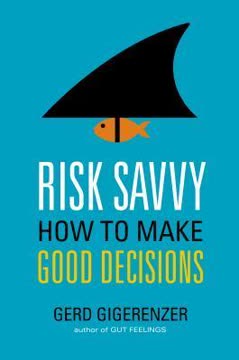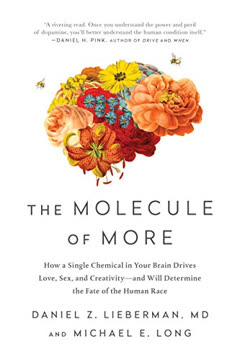Key Takeaways
1. Gamification: Harnessing Game Elements for Business Success
Gamification is the process of manipulating fun to serve real-world objectives.
Defining gamification. Gamification is the application of game elements and game-design techniques to non-game contexts. It's not about creating full-fledged games, but rather using game mechanics to engage people and solve real-world problems. This approach can be applied to various business scenarios:
- Internal: Improving employee productivity and innovation
- External: Enhancing customer engagement and loyalty
- Behavior change: Encouraging positive habits and societal outcomes
Success stories. Companies like Microsoft, Nike, and Starbucks have successfully implemented gamification:
- Microsoft's Language Quality Game improved Windows 7 localization
- Nike+ gamified exercise tracking to boost customer engagement
- Starbucks' rewards program incorporates game elements to increase loyalty
Gamification works because it taps into fundamental human desires for achievement, status, and social connection. When designed thoughtfully, it can create powerful motivation and engagement.
2. The Psychology of Motivation: Intrinsic vs. Extrinsic Rewards
Extrinsic rewards can be profoundly demotivating.
Understanding motivation. The key to effective gamification lies in understanding human motivation. There are two primary types:
- Intrinsic motivation: Doing something because it's inherently enjoyable or satisfying
- Extrinsic motivation: Doing something for external rewards or to avoid punishment
The danger of extrinsic rewards. While extrinsic rewards can be effective for boring tasks, they can actually decrease motivation for activities that are already intrinsically rewarding. This is known as the "crowding out" effect.
Self-Determination Theory. To create truly engaging gamified systems, focus on satisfying three core human needs:
- Competence: Feeling effective and masterful
- Relatedness: Connecting with others
- Autonomy: Having a sense of control and choice
By designing systems that address these needs, you can create more sustainable and powerful motivation than relying solely on external rewards.
3. Game Thinking: A New Approach to Problem-Solving
Game thinking is a way to approach your existing management challenges in the same tradition as total quality management, process reengineering, design thinking, or any other business technique.
Adopting a game designer's mindset. Game thinking involves approaching problems with the mindset of a game designer. This means focusing on creating engaging experiences that motivate desired behaviors, rather than simply adding points or badges to existing processes.
Key aspects of game thinking include:
- Focusing on player motivation and experience
- Creating meaningful choices and feedback loops
- Balancing challenge and skill progression
- Fostering a sense of agency and control
The magic circle. Games create a special space, separate from everyday life, where different rules apply. In gamification, you're creating a "magic circle" around your business objectives, inviting users to step into a more engaging and motivating version of reality.
Assessing gamification potential. Before implementing gamification, consider these factors:
- Motivation: Where would encouraging behavior create value?
- Meaningful choices: Are the target activities sufficiently interesting?
- Structure: Can desired behaviors be modeled through algorithms?
- Potential conflicts: Can the game avoid conflicts with existing motivational structures?
4. The PBL Triad: Points, Badges, and Leaderboards
Points, badges, and leaderboards are so common within gamification that they are often described as though they are gamification. They are not, but they are a good place to start.
Understanding PBLs. Points, Badges, and Leaderboards (PBLs) are the most common elements in gamification implementations. While they can be effective, it's crucial to understand their strengths and limitations:
Points:
- Keep score and track progress
- Provide immediate feedback
- Connect in-game actions to real-world rewards
Badges:
- Visually represent achievements
- Provide goals and guidance
- Serve as status symbols and group identifiers
Leaderboards:
- Create context for progression
- Motivate competition
- Can be demotivating if poorly implemented
Beyond simple implementation. While PBLs are a good starting point, effective gamification requires thoughtful design that goes beyond these basic elements. Consider how PBLs can be used to support intrinsic motivation and create meaningful experiences, rather than relying on them as the sole drivers of engagement.
5. Beyond PBLs: Dynamics, Mechanics, and Components
Dynamics are the big-picture aspects of the gamified system that you have to consider and manage but which you can never directly enter into the game.
The game element hierarchy. To create more sophisticated gamified systems, consider the full range of game elements:
-
Dynamics (highest level):
- Constraints
- Emotions
- Narrative
- Progression
- Relationships
-
Mechanics (processes that drive action):
- Challenges
- Chance
- Competition
- Cooperation
- Feedback
- Resource acquisition
- Rewards
- Transactions
- Turns
- Win states
-
Components (specific forms of mechanics or dynamics):
- Achievements
- Avatars
- Boss fights
- Collections
- Combat
- Content unlocking
- Gifting
- Levels
- Quests
- Social graphs
- Teams
- Virtual goods
By understanding and creatively combining these elements, you can design more engaging and effective gamified systems that go beyond simple PBLs.
6. The Six D's of Gamification Design
Gamification requires a fusion of art and science.
A structured design process. To create effective gamified systems, follow these six steps:
- Define business objectives
- Delineate target behaviors
- Describe your players
- Devise activity cycles
- Don't forget the fun!
- Deploy appropriate tools
Key considerations:
- Start with clear business goals and desired behaviors
- Understand your users through player types and motivations
- Create engaging loops of action, feedback, and motivation
- Design progression stairs that increase challenge over time
- Ensure the experience is genuinely enjoyable
- Choose appropriate game elements and technologies for implementation
By following this process, you can create gamified systems that are both strategically aligned with business objectives and genuinely engaging for users.
7. Avoiding Pitfalls: Legal, Ethical, and Design Considerations
If they are not dangerous, then why do people still feel uncomfortable when they hear about game elements being used in marketing or enterprise or social impact settings?
Legal considerations. Gamification can intersect with various legal issues:
- Privacy and data protection
- Intellectual property rights
- Sweepstakes and gambling regulations
- Labor laws
- Advertising regulations
Ethical concerns. Be mindful of potential ethical issues:
- Exploiting users for business gain
- Creating addictive or compulsive behaviors
- Manipulating users without their knowledge or consent
Design pitfalls:
- Pointsification: Overreliance on points and external rewards
- Ignoring intrinsic motivation
- Creating systems that can be easily gamed or exploited
Best practices:
- Be transparent about your goals and methods
- Prioritize user well-being and autonomy
- Design systems that are challenging but fair
- Continuously monitor and adjust based on user feedback and behavior
By addressing these concerns proactively, you can create gamified systems that are not only effective but also ethically sound and legally compliant.
8. The Future of Gamification: Transforming Education and Work
Just Press Play shows how you can use a game-like system to motivate behavior that is important but usually ignored.
Reimagining education. Gamification has the potential to revolutionize learning by:
- Encouraging behaviors that support academic success
- Fostering collaboration and peer-to-peer learning
- Making abstract concepts more engaging and concrete
Transforming work. In the workplace, gamification can:
- Increase employee engagement and productivity
- Facilitate innovation and creative problem-solving
- Improve training and skill development
Key success factors:
- Focus on intrinsic motivation and meaningful experiences
- Align game elements with core organizational objectives
- Continuously iterate and improve based on user feedback and data
As gamification matures, we can expect to see more sophisticated and integrated implementations that seamlessly blend game elements with real-world activities, creating more engaging and effective experiences in education, work, and beyond.
Last updated:
FAQ
What's "For the Win: How Game Thinking Can Revolutionize Your Business" about?
- Overview: "For the Win" by Kevin Werbach and Dan Hunter explores how game thinking can be applied to business contexts to enhance engagement and motivation.
- Gamification Focus: The book delves into gamification, which involves using game elements and design techniques in non-game settings to solve business problems.
- Practical Guide: It provides a step-by-step framework for implementing gamification in various business areas, such as marketing, productivity, and customer engagement.
- Real-World Examples: The authors illustrate their points with numerous case studies of companies successfully using gamification.
Why should I read "For the Win"?
- Innovative Approach: The book offers a fresh perspective on business challenges by applying game design principles.
- Engagement Strategies: It provides insights into how to increase employee and customer engagement through gamification.
- Actionable Framework: Readers receive a practical six-step process to implement gamification effectively in their organizations.
- Expert Authors: Written by experts who created the first gamification course at Wharton, the book is grounded in both academic research and practical application.
What are the key takeaways of "For the Win"?
- Gamification Definition: Gamification is the use of game elements and design techniques in non-game contexts to motivate and engage people.
- Motivation Insights: Understanding intrinsic and extrinsic motivation is crucial for designing effective gamified systems.
- Design Process: The book outlines a six-step process for implementing gamification, emphasizing the importance of defining objectives and understanding player types.
- Avoiding Pitfalls: It warns against common mistakes like "pointsification" and highlights the importance of creating genuinely engaging experiences.
How does "For the Win" define gamification?
- Game Elements: Gamification involves using elements like points, badges, and leaderboards to create engaging experiences.
- Non-Game Contexts: It applies these elements in business settings to solve real-world problems, not just for entertainment.
- Design Techniques: The book emphasizes the importance of thinking like a game designer to create systems that motivate desired behaviors.
- Broader Scope: Gamification is not about turning everything into a game but using game principles to enhance existing processes.
What is the six-step framework for gamification in "For the Win"?
- Define Objectives: Clearly outline the business goals you aim to achieve with gamification.
- Delineate Behaviors: Identify the specific actions you want to encourage among your players.
- Describe Players: Understand your audience and segment them to tailor the gamified experience.
- Devise Activity Cycles: Create engagement loops and progression stairs to sustain interest and motivation.
- Don't Forget Fun: Ensure the gamified system is enjoyable and engaging for users.
- Deploy Tools: Implement the appropriate game elements and continuously refine the system based on feedback.
How does "For the Win" address motivation in gamification?
- Intrinsic vs. Extrinsic: The book explains the difference between intrinsic motivation (doing something for its own sake) and extrinsic motivation (doing something for a reward).
- Self-Determination Theory: It highlights the importance of competence, relatedness, and autonomy in fostering intrinsic motivation.
- Crowding-Out Effect: Warns that extrinsic rewards can diminish intrinsic motivation if not used carefully.
- Feedback Importance: Emphasizes the role of feedback in motivating users and sustaining engagement.
What are the common pitfalls in gamification according to "For the Win"?
- Pointsification: Over-reliance on points, badges, and leaderboards without creating meaningful engagement.
- Legal and Ethical Issues: Potential legal challenges related to privacy, intellectual property, and deceptive practices.
- Exploitation Concerns: The risk of using gamification to manipulate users into actions against their interests.
- System Gaming: Users may find ways to exploit the system, which can undermine its effectiveness.
What are some real-world examples of gamification in "For the Win"?
- Microsoft's Language Quality Game: Used gamification to improve software testing by turning it into a competitive challenge.
- Fitocracy: A fitness platform that uses game elements to motivate users to exercise and track their progress.
- Keas: A health and wellness company that gamified its platform to encourage healthier behaviors among employees.
- Club Psych: A TV show fan site that increased engagement through points, badges, and interactive challenges.
How does "For the Win" suggest measuring the success of gamification?
- Behavior Metrics: Define specific behaviors you want to encourage and measure them quantitatively.
- Analytics Use: Employ analytics to track user interactions and assess the effectiveness of the gamified system.
- Feedback Loops: Use feedback to continuously refine and improve the gamification strategy.
- Win States: Establish clear win conditions to motivate users and measure progress.
What are the best quotes from "For the Win" and what do they mean?
- "A well-designed game is a guided missile to the motivational heart of the human psyche." This highlights the power of games to engage and motivate people deeply.
- "Engagement is your competitive advantage." Emphasizes the importance of engaging employees and customers to outperform competitors.
- "Gamification is a powerful toolkit to apply to your existing business challenges." Suggests that gamification can enhance, not replace, current business practices.
- "If fun matters, it’s because people matter." Underlines the human-centric approach of gamification, focusing on creating meaningful experiences.
How does "For the Win" differentiate between game elements and game design?
- Game Elements: These are the building blocks of games, such as points, badges, and leaderboards, used in gamification.
- Game Design: Involves the overall process of creating engaging experiences by understanding player motivations and crafting compelling narratives.
- Integration: Successful gamification requires integrating game elements into a cohesive design that aligns with business objectives.
- Beyond PBLs: The book encourages looking beyond points, badges, and leaderboards to create richer, more engaging systems.
What future trends in gamification does "For the Win" predict?
- Mainstream Adoption: Gamification will become a standard part of business strategies, similar to social media today.
- Enterprise Applications: Increased use in internal business processes, particularly in human resources and sales.
- Social Impact: Greater application in government, politics, and social causes to motivate positive behavior change.
- Innovation Opportunities: New and creative uses of gamification will continue to emerge as businesses explore its potential.
Review Summary
For the Win receives mixed reviews, with an average rating of 3.76 out of 5. Readers appreciate its comprehensive overview of gamification concepts and practical examples. Many find it a good introductory text, praising its readability and structure. However, some criticize its lack of depth and oversimplification of complex ideas. The book is commended for its balanced approach, discussing both benefits and potential pitfalls of gamification. Critics note that while it provides a solid foundation, it may not offer enough detail for advanced implementation.
Similar Books










Download PDF
Download EPUB
.epub digital book format is ideal for reading ebooks on phones, tablets, and e-readers.




